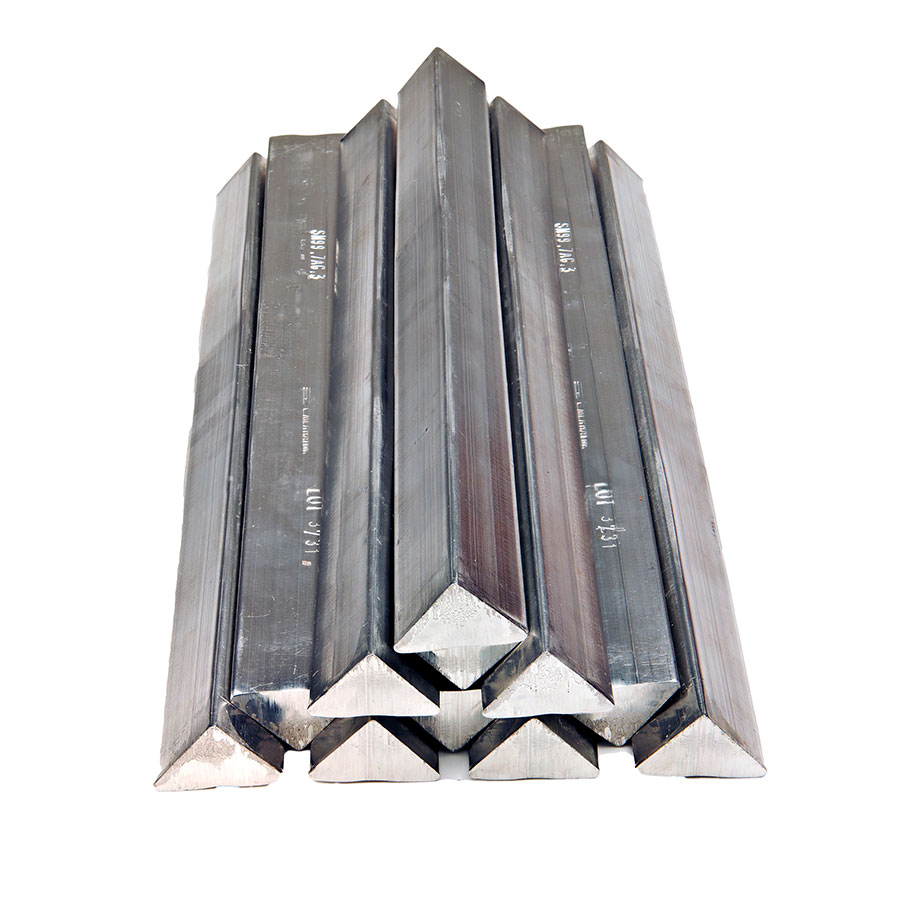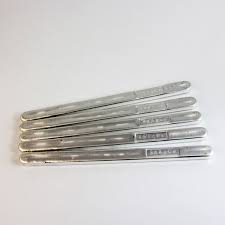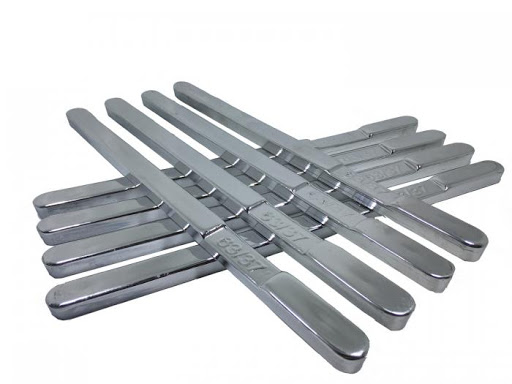The function of lead free solder bar is the same as a leaded solder bar
Lead free solder bar bears the most significant production as well as health-related benefits. However, owing to the wide use, most solders even now are using the lead solder bar for attaching the electronic components. Furthermore, the wide use of lead solders for projects is not a regulated phenomenon. This is because these projects either are not used as public or commercial projects.
For this reason, there is no specific regulation against the use of these lead solder bars. On the contrary, lies the lead-free solders. These solders comprise several chemical elements. They are tin, manganese, zinc, copper, silver, and gold. Nevertheless, the most common of them are tin, tin, zinc, and copper. Additionally, these three elements are abbreviated as SAC. SAC represents the atomic symbol of each element. Sn for tin, Ag for silver, and Cu for copper.

Do We Need Lead-Free Solder Bars?
The RoHS stands for the Restriction of Hazardous Substances. It is the EU institution that monitors and regulates the use of hazardous materials. The institution also recommends and prohibits the manufacturers from the use of lead solder bars. It suggests the use of lead free solder bar in Europe. The basic purpose of recommending and regulating the use of lead solder is to limit the lead in landfill sites. These are the major issues that Europe is facing.
Moreover, in the USA, industries are also making the manufacturers stay concerned about the reduction of lead solders. Also, the solder wires act as the sources to harness the wires to the connection. But the electronic devices soon wear this harness off. Therefore, we need to dispose of these devices. This is the reason that there is an excessive amount of lead in landfill sites and disposal areas. For this reason, it is now mandatory to minimize the use of lead-free solders in electronic components.
Differences between Lead Solders and Lead-Free Solder Bars
The alternative to lead solder bars in electronic components is the lead free solder bar. The increase of downsizing of solder joint overall in electronic components brings more advantages. The components eventually withstand more load whether electrical or mechanical. This ability helps in developing more stability and reliability.
This is the reason that it is better to connect the electronic components that include SMT, BGA, and CSP systems must look for strong mechanical connections. These connections then must use solder joints. By this, the overall quality, as well as the reliability of the electronic components, is realized.
If the connection gets off, there is a great chance of breaking down the whole device. Therefore, the major concern is to ensure the quality of the solder joints in modern applications. In addition to this, the use of lead amalgamates other toxic components and chemical substances as well.
These chemicals bring people, in the longer run, danger, and threat to their lives and ecology. Now the trend is changing. The lead free solder bar is replacing successfully the lead solder bar that helps in protecting the environmental hazards. The lead-free manufacturing process differs greatly from that of others. This hence makes it pertinent to understand the manufacturing process of lead-free soldering components.
Comparison of Properties Between Lead Solders and Lead-Free Solders
Higher Melting Points
The foremost feature or you may say a negative aspect of lead free solder bar is its high melting point. This melting point is higher in comparison to that of lead solders. The melting point of the conventional solder bar that we use, Sn37Pb, is 183 degrees Celsius.
Also, the melting point of the lead-free solder bar, SAC387, lies at 217 degrees Celsius. You can realize that the latter lead-free solder bar features a 34-degree higher melting point than that of a traditional lead bar. This thereby leads to various consequences. Which are:
- This property allows the solders to get oxidized with other compounds that grow between the metal connections. This happens due to the temperature rise.
- Those electronic components that equip the plastic material or packaging or any capacitor inside it get damage due to high temperature.
- The use of SAC solder bars results in more stress and shock to the electronic components which leads to the ultimate failure. This happens because some materials carry low dielectric constant value.
- The use of tin as soldering material is cheap and cost-effective. However, it prone readily to oxidation. In addition to this, there are chances of shock and stress that generate tin whiskers.
Safety Risks of Lead Solder Bars
In terms of risk of using the lead solder bar is both for humans as well as environmental. Lead is a material that is dangerous for the organs as it gets absorbed readily by the human body. However, there are no such chances of engulfing the whole solid solder bar of lead. But fumes, as well as particles, may get ingested by the user.
Safety gets assured when the worker uses gloves, wears a mask to avoid fumes and vapors, wash hands, and disposes of the residue properly. There are more chances of getting affected when the temperature of the soldering iron rises above 300 degrees Celsius. Therefore, it is recommended to keep the iron temperature to the prescribed level.
In terms of lead-free solder bars, there are no such environmental or health hazards. As lead-free elements are in wide use for thousands of years by humans as the process of metallurgy. But the issues that arise from using lead-free are purely technical.
This is the reason that users must create a sense of balance. However, using the lead-free material like tin or the mixture of tin and lead as 60/40 tin-lead proportion, issues arise. By this stage and amalgamation, the solder gets a range of plastic. Here, there are chances of cracks and breakage of solder bonds and weakening of the joints. The solidification must be proper so that there will no cracking and separation.
Physical Characteristics of Lead and Lead-Free Solders
The physical characteristic of lead-free solder bars in comparison to lead bars depicts the lack of reliability. This lack of reliability thereby imposes a bad influence on the joints. But the mechanical properties of a lead-free solder bar are encouraging.
It is much harder and more robust than lead joints. There are more chances of getting oxidation and contamination. This ultimately leads to the connection between resistance and weakness. Also, lead-free bars offer bad wettability when compare to lead bars. This property makes the joint incapable of meeting the requirement.

This includes tensile strength and calibration. So, it is a reliable alternative to the traditional lead soldering process? No, it is not in a complete sense. By the above analysis, we cannot recommend the lead-free solder bars as a pure replacement to lead bars. The reasons behind such conclusion are:
- The foremost reason is the lead is relatively a soft material. Whereas the lead-free elements are hard in their connection. The result of this will lead the lead-free elements bearing higher intensity and lesser in transformation. This property makes the lead-free joint more reliable and tougher than that of lead joints.
- Lead free solder bars are more prone to featuring bad wettability. This problem will lead the joints towards defects that include tomb standing, displacement of joints, and vacancy.
For More Information, Contact Us Today!




